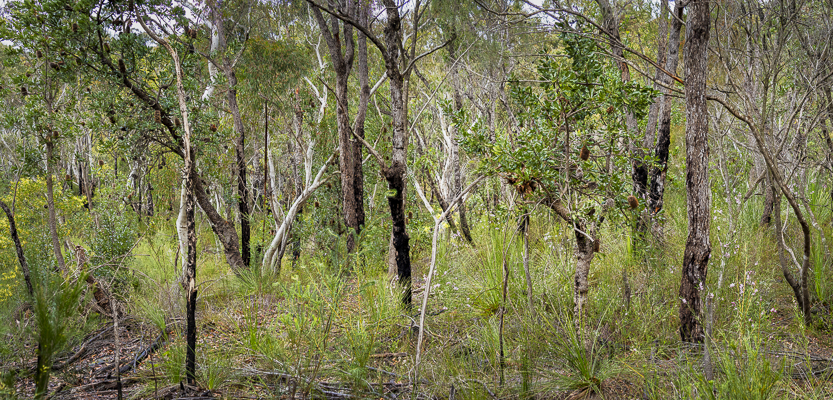A bushland or habitat garden mimics nature. Such gardens are designed to create as much habitat as possible for local wildlife. This means they have to be multilayered, diverse and complex and create food and shelter year round.

A habitat or bushland gardens includes:
- Use of native plants, and particularly those local to the area
- Many different types of plants are present – trees, shrubs, groundcovers, grasses – to add layers
- Many different species of plants are added, for complexity and diversity and providing year round food and shelter
- Plants that suit the soil, sun and water conditions, for health
- Water (a pond or birdbath) for the critters
- Garden beds are mulched or covered in leaf litter, to reduce weeds and evaporation
- Rocks, dead and decaying logs and stumps abound for ground hugging animals and insects
How to create a habitat or bushland garden
- Analyse your site – soil, sun, water, what plants are already there
- Assess your and your family’s needs – play areas, washing line, driveways, views
- Draw up a plan
- Do any earthworks, layout garden beds and clear grass and weeds
- Choose your trees, shrubs and ground covers, ideally local and suited to your site
- Plant the plants, then mulch and water until established
- Maintain (weeding, pruning, managing pests, replacing in need)
What to avoid
- Feeding wildlife – this can cause disease and weakens the creatures’ resilience
- Pesticides and herbicides – which can harm birds and insects
- Being too tidy – embrace some messiness
Now all the hard work is done, sit back and enjoy.
